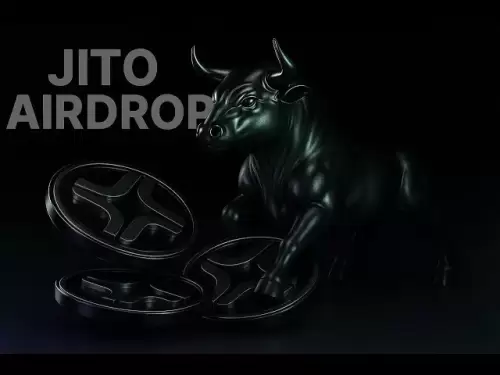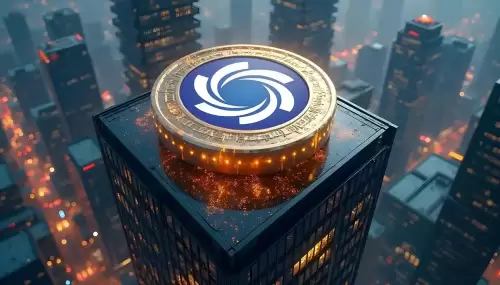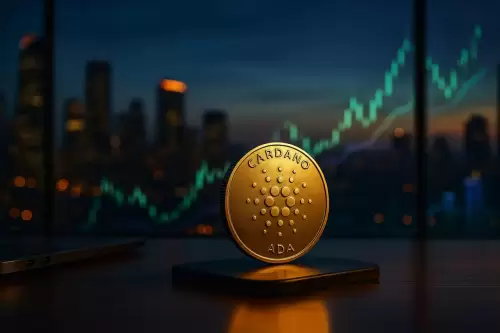 |
|
 |
|
 |
|
 |
|
 |
|
 |
|
 |
|
 |
|
 |
|
 |
|
 |
|
 |
|
 |
|
 |
|
 |
|
在过去的十年中,区块链技术已从白皮书转变为全球热潮,然后从炒作浪中蒸馏出实用逻辑

In the past decade, blockchain technology has moved from a white paper to a global craze, then distilled practical logic from a hype wave, returning from "on-chain games" to solving "real-world problems." A typical representative of this trend that is increasingly being bet on by more capital and institutions is RWA (Real World Assets Tokenization).
在过去的十年中,区块链技术已从白皮书转变为全球热潮,然后从炒作浪潮中蒸馏出实用的逻辑,从“链游戏”返回到解决“现实世界中的问题”。 RWA(现实世界资产令牌化)是这一趋势越来越多地押注的典型代表。
From the earliest Bitcoin and Ethereum, to the brief frenzy of NFTs, and now the rapidly advancing RWA, blockchain has always been answering one question: How to transform virtual technological advantages into financial value in reality?
从最早的比特币和以太坊到NFT的简短疯狂,现在是迅速前进的RWA,区块链一直在回答一个问题:如何将虚拟技术优势转变为现实中的财务价值?
Bitcoin's Revelation: The Ceiling of Technological Fundamentalism
比特币的启示:技术原教旨主义的上限
In 2009, the emergence of Bitcoin sparked a global cryptocurrency wave. It challenged the existing financial system with a completely chain-born decentralized model, attracting the faith of countless geeks and anti-mainstreamers. However, problems quickly surfaced: low transaction efficiency, high energy consumption, unclear value anchoring, and a singular application scenario. More importantly, it is too disconnected from the asset and value system of the real world.
2009年,比特币的出现引发了全球加密货币浪潮。它通过完全连锁的分散模型挑战了现有的金融体系,吸引了无数的极客和反主流者的信仰。但是,问题迅速浮出水面:交易效率低,能耗高,价值锚定以及奇异的应用方案。更重要的是,它与现实世界的资产和价值体系脱节。
Bitcoin, as a "digital gold", is destined to exist more as a speculative value target rather than a true medium for the circulation of production factors. Especially in areas such as cross-chain operations, off-chain payments, and connections with fiat currency, it relies heavily on centralized exchanges and stablecoin systems, which makes the so-called "decentralized security" structurally fragile.
作为“数字黄金”,比特币注定要成为投机价值目标,而不是生产因子循环的真正媒介。尤其是在跨链操作,链付款和与法定货币的连接等领域,它在很大程度上依赖着集中的交易所和稳定系统,这使所谓的“分散安全性”结构上易碎。
These issues have laid the groundwork for the emergence of RWA, hinting that "real needs have not yet been met".
这些问题为RWA的出现奠定了基础,暗示“尚未满足真正的需求”。
NFT Transition: The embryonic form of tokenization, but difficult to bear financial functions.
NFT过渡:令牌化的胚胎形式,但很难承担财务功能。
The explosion of NFTs showed us for the first time that non-fungible assets in the real world can be encrypted, tokenized, and traded. CryptoPunks, BAYC, virtual land—these NFTs based on the Ethereum ERC-721 standard are no longer "purely chain-born assets", but are contrasted with artworks, intellectual property, and other values.
NFTS的爆炸率首次向我们展示了现实世界中的不可杀菌资产可以被加密,令牌化和交易。 Cryptopunk,BAYC,虚拟土地 - 这些基于以太坊ERC-721标准的NFT不再是“纯粹的链出生资产”,而是与艺术品,知识产权和其他价值观形成鲜明对比的。
However, the limitations of NFTs are also obvious:
但是,NFT的局限性也很明显:
Most image and video storage is off-chain, posing a technical risk of disconnection;
大多数图像和视频存储都是离链的,带来了断开连接的技术风险。
Market speculation is heavy, and value anchoring remains unclear;
市场投机很重,价值锚定尚不清楚。
Transaction infrastructure relies on centralized platforms, lacking a sustainable user base in the long term;
交易基础设施依赖于集中式平台,从长远来看,缺乏可持续的用户基础;
Under the existing legal and regulatory framework, the boundaries of NFT property rights are vague, making it difficult to form a compliant circulation logic.
在现有的法律和监管框架下,NFT财产权的界限含糊不清,因此很难形成合规的循环逻辑。
Although NFTs have opened a door for the concept of RWA, they cannot truly solve the systemic problem of "real assets being brought on-chain".
尽管NFT为RWA的概念打开了一扇门,但他们无法真正解决“真正的资产被带入链”的系统问题。
The emergence of RWA: Bringing blockchain into the 'main subject' of the real world.
RWA的出现:将区块链带入现实世界的“主要主题”。
Unlike Bitcoin or NFTs, RWA is not about "creating a coin", but about bringing existing valuable assets in the real world on-chain and tokenizing them. Whether it is real estate, bonds, accounts receivable, copyrights, energy, or even data assets, the core of RWA is to enable traditional assets to be operated "on-chain", achieving efficiency improvement and market expansion.
与比特币或NFT不同,RWA并不是要“创建硬币”,而是要将现有宝贵资产带到现实世界中的链链并将其化为它们。无论是房地产,债券,应收账款,版权,能源甚至数据资产,RWA的核心都是使传统资产能够“链”运营,从而实现效率提高和市场扩张。
Core advantages:
核心优势:
Breaking the isolation of traditional finance.: By standardizing different assets through tokens, we can lower transaction barriers;
打破传统金融的隔离。
Enhancing liquidity: Turning originally non-standard, hard-to-circulate assets into globally tradable "digital shares";
提高流动性:最初不可汇入的,难以循环的资产变成全球可交易的“数字股票”;
Increasing trust and transparency: On-chain data is public and traceable, reducing intermediary and audit costs;
提高信任和透明度:链链数据是公开的,可追溯,降低了中介和审计成本;
Promoting financial inclusivity: Global users can participate in high-value asset transactions with a low threshold, disrupting the monopoly of traditional institutions.
促进财务包容性:全球用户可以以低门槛参与高价值资产交易,从而破坏了传统机构的垄断。
The actual promoters of these types of assets include traditional financial giants such as BlackRock and Franklin Templeton, who have begun to tokenize bonds, government bonds, and other assets on-chain, and run models in real markets. Moreover, AI investment research platforms such as Mlion.ai have also begun to extract key data from the RWA track, supported by intelligent strategy diagrams, assisting users in identifying the real value and trading logic of assets in emerging markets.
这些类型的资产的实际发起人包括贝莱德(Blackrock)和富兰克林·邓普顿(Franklin Templeton)等传统金融巨头,他们已经开始将债券,政府债券和其他链接上的其他资产以及在真实市场上运行的模型。此外,诸如mlion.ai之类的人工智能投资研究平台也已开始从RWA轨道中提取关键数据,并在智能战略图的支持下,协助用户确定新兴市场中资产的实际价值和交易逻辑。
The problems still exist: The authenticity of underlying assets and regulatory compliance are hard injuries.
问题仍然存在:基本资产和法规依从性的真实性是严重伤害。
Although RWA has broad prospects, it is not without challenges, especially regarding the authenticity of assets, legal protection, and the implementation of on-chain governance mechanisms.
尽管RWA的前景广泛,但这并非没有挑战,尤其是关于资产,法律保护和实施链政府机制的真实性。
How to confirm the real existence of the physical assets represented by on-chain tokens?
如何确认由链令牌代表的物理资产的实际存在?
How to handle legal actions such as asset ownership disputes and debt transfer?
如何处理诸如资产所有权争议和债务转移之类的法律行动?
How to construct a compliance trading framework under a multinational legal environment?
如何在跨国法律环境下构建合规性交易框架?
How to custody, clear, and settle on-chain assets to avoid pseudo-DeFi?
如何监护,清除和解决链上的资产以避免伪defi?
Currently, whether it is the on-chain evidence standards, regulatory reporting requirements, or tax audits and anti-money laundering systems, RWA faces extremely high demands. This is a significant reason why RWA needs the integration of technology, institutions, and financial logic.
目前,无论是链上证据标准,监管报告要求还是税收审计和反洗钱系统,RWA都面临着极高的需求。这是RWA需要整合技术,机构和财务逻辑的重要原因。
China's reality: Technological readiness VS Regulatory implementation.
中国的现实:技术准备与监管实施。
In China, to promote the healthy development of RWA, the following key
在中国,为了促进RWA的健康发展,这是以下关键
免责声明:info@kdj.com
所提供的信息并非交易建议。根据本文提供的信息进行的任何投资,kdj.com不承担任何责任。加密货币具有高波动性,强烈建议您深入研究后,谨慎投资!
如您认为本网站上使用的内容侵犯了您的版权,请立即联系我们(info@kdj.com),我们将及时删除。
-

-

-

- 贝宝,比特币和商人:商业的新时代?
- 2025-07-29 04:05:38
- PayPal通过使商人能够接受比特币和其他加密货币来引起海浪。这是商业的未来,还是只是过去的趋势?
-

-

-

-

- XRP持有人,夜令牌和Airdrop Bonanza:有什么交易?
- 2025-07-29 03:49:04
- XRP持有人正在待遇!从气流到潜在的ETF批准,我们分解了最新的发展以及它们对您的XRP藏匿处的意义。
-

-

- 莫娜·丽莎(Mona Lisa)数字化:NFTS,百万美元的梦想和艺术的未来
- 2025-07-29 03:20:07
- 探索Mona Lisa,NFTS和百万美元的估值的交集,研究塑造数字艺术界的趋势和见解。




























































